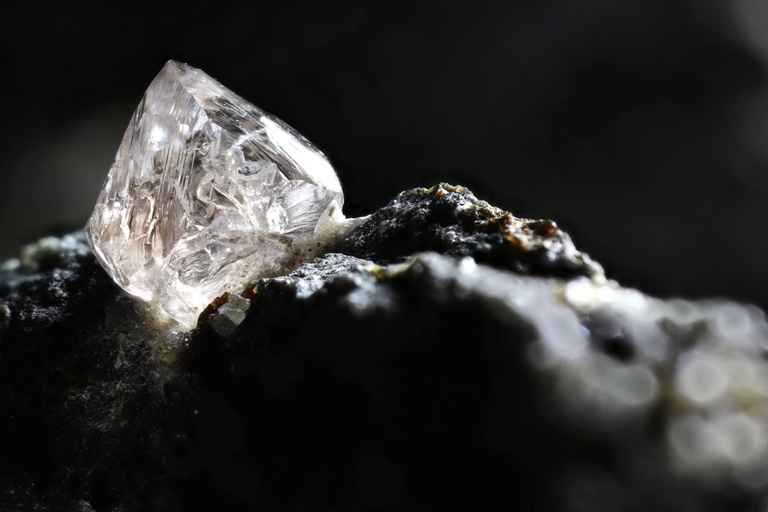While the ring is the most critical aspect of a diamond ring, the diamond embedded in it is often given the most thought. After all, it’s the most expensive part of the ring, and haphazardly buying a diamond ring without giving the diamond some healthy scrutiny may put you in a very regrettable position.
While most people base their decision on the price of diamonds, a brilliant shopper takes into consideration the 4Cs: cut, clarity, carat, and color. When shopping for diamonds, regardless of whether they’re for rings, necklaces, or earrings, you should always find a balance between these four traits. Each of these characteristics elevates the perceived quality of the diamond. However, it can be tricky to do if you’re not aware of what they are in the first place.
This short guide will inform you about what those 4Cs are and how they should affect your buying decision.
Table of Contents
Cut
The cut of the diamond largely influences its beauty compared to the other Cs. It often determines how sparkly and captivating a diamond is. And it can also significantly affect its price.
Because of this, it’s often recommended by experts to prioritize cut over the other qualities. In addition to the cut, you should also make sure that the diamond has been graded by the American Gem Society (AGS) or the Gemological Institute of America (GIA).
These organizations have expert gemologists and diamontologists that can give buyers an unbiased rating and answers to specific gems and diamond-related questions. And to let you know how important they are, know that the GIA is the organization that came up with the 4C rating, which is often referred to as the International Diamond Grading System.
A graded diamond often comes with a certificate number. You can check the number with the organization where it was certified.
Currently, the most popular cut is the round brilliant. Nowadays, most loose diamonds (diamonds sold separately and are ready to be mounted on jewelry) have this cut (about 70% of them). The better the craftsmanship or cut, the more a diamond will shine.
Other cuts often used for diamonds are half-moon, heart, curved trillion, marquise, oval, round, emerald, cushion, radiant, pear, princess, triangle, straight trillion, Asscher, calf, and square cushion. Yes, there are many, and there are a lot more other cuts born from combinations of these basic cuts.
Also, know that some cuts are preferred depending on the diamond’s purpose. For example, popular cuts for engagement rings are round, princess, cushion, emerald, marquise, and oval. Most shops will also offer you guidance on what cut will suit you best and will ask you for whom or for what purpose the diamond will be used.

Color
Of course, you don’t just rely on the certification and reference numbers. Many stores sell diamonds with fake reference numbers. And while the diamond grading institutions are easily reachable, they take time before they authenticate the diamonds themselves.
Because of that, you should also learn how to appraise a diamond. And to do that, you must be aware of the following quality: color.
The color is one of the best indicators if a diamond is real, fake, or graded. When it comes to diamond color, colorless is always prized. You don’t even have to have special equipment to know if the color deviates from what a store may have promised you.
However, know that even if a colorless diamond is highly valued, you shouldn’t pay too much for a high color grade. In most cases, the difference between a standard and a premium color-graded diamond is almost impossible to discern by the naked eye. While it’s good to know that you have a high-grade diamond color, nobody would know it unless they’re a gemologist carrying their equipment with them.

Clarity
Clarity is associated with a diamond’s perfection. If a diamond doesn’t have blemishes and inclusions, it’s of high clarity. And just like with color, you shouldn’t focus on clarity because the difference between a high clarity diamond and a normal one is indiscernible.
Without the technicalities, clarity is a quality that dictates how clear a diamond is. Most diamonds will appear clear and colorless (yes, clarity is often tied with color) without the help of magnification tools.
Back then, diamonds were often described as “included” or “eye-clean,” which can be confusing. Clarity has become one of the standardizations in diamond grading to make it easier for people and even gemologists to determine diamonds’ actual value and clarity grade.
When talking about clarity, you’ll hear the words flawless and internally flawless. Those two are the highest grade, clarity-wise. Once it goes below those or if inclusions were found, you’ll deal with grades (from highest to lowest) like very very slightly included, very slightly included, slightly included, and included. In some grading institutions, like GIA, these grades are often divided further into two (e.g., VVS1, VVS2, VS1, VS2, and others).

Carat
Most movies and television shows often emphasize a gem’s value through its carat. If you’re not aware, a carat is the weight of a gem or stone. While the carat of a stone is highly valued, it’s considerably lower for diamonds. After all, the carat often doesn’t affect a diamond’s beauty. Also, the carat weight of diamonds often deviates in small amounts.
You should know that the size of a diamond is different from the carat weight. Also, karat is different from carat. Karat is a measurement of gold’s purity, while carat is used to determine the mass of gemstones. Know that 1 carat equates to 0.2 grams (200 milligrams).
Conclusion
Those are the 4Cs. Choosing a diamond shouldn’t be complicated. And because of this grading system, it has become more accessible and more manageable for even laypeople to determine if a diamond is of high quality or not. Of course, it doesn’t mean that you shouldn’t rely on experts when choosing a diamond. As much as possible, hear out the opinions of gemologists and experts. However, be sure that what they say matches what you know.


